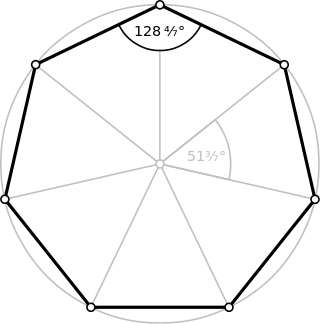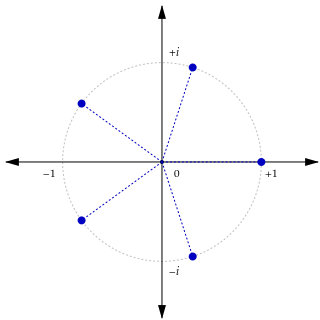Related Research Articles

In mathematics, an abelian group, also called a commutative group, is a group in which the result of applying the group operation to two group elements does not depend on the order in which they are written. That is, the group operation is commutative. With addition as an operation, the integers and the real numbers form abelian groups, and the concept of an abelian group may be viewed as a generalization of these examples. Abelian groups are named after early 19th century mathematician Niels Henrik Abel.

In mathematics, a field is a set on which addition, subtraction, multiplication, and division are defined and behave as the corresponding operations on rational and real numbers. A field is thus a fundamental algebraic structure which is widely used in algebra, number theory, and many other areas of mathematics.

In mathematics, an isomorphism is a structure-preserving mapping between two structures of the same type that can be reversed by an inverse mapping. Two mathematical structures are isomorphic if an isomorphism exists between them. The word isomorphism is derived from the Ancient Greek: ἴσοςisos "equal", and μορφήmorphe "form" or "shape".

In mathematics, specifically group theory, given a prime number p, a p-group is a group in which the order of every element is a power of p. That is, for each element g of a p-group G, there exists a nonnegative integer n such that the product of pn copies of g, and not fewer, is equal to the identity element. The orders of different elements may be different powers of p.

In abstract algebra, group theory studies the algebraic structures known as groups. The concept of a group is central to abstract algebra: other well-known algebraic structures, such as rings, fields, and vector spaces, can all be seen as groups endowed with additional operations and axioms. Groups recur throughout mathematics, and the methods of group theory have influenced many parts of algebra. Linear algebraic groups and Lie groups are two branches of group theory that have experienced advances and have become subject areas in their own right.

In mathematics, topological groups are the combination of groups and topological spaces, i.e. they are groups and topological spaces at the same time, such that the continuity condition for the group operations connects these two structures together and consequently they are not independent from each other.

In abstract algebra, a cyclic group or monogenous group is a group, denoted Cn, that is generated by a single element. That is, it is a set of invertible elements with a single associative binary operation, and it contains an element g such that every other element of the group may be obtained by repeatedly applying the group operation to g or its inverse. Each element can be written as an integer power of g in multiplicative notation, or as an integer multiple of g in additive notation. This element g is called a generator of the group.
In mathematics, a free abelian group is an abelian group with a basis. Being an abelian group means that it is a set with an addition operation that is associative, commutative, and invertible. A basis, also called an integral basis, is a subset such that every element of the group can be uniquely expressed as an integer combination of finitely many basis elements. For instance the two-dimensional integer lattice forms a free abelian group, with coordinatewise addition as its operation, and with the two points (1,0) and (0,1) as its basis. Free abelian groups have properties which make them similar to vector spaces, and may equivalently be called free-modules, the free modules over the integers. Lattice theory studies free abelian subgroups of real vector spaces. In algebraic topology, free abelian groups are used to define chain groups, and in algebraic geometry they are used to define divisors.
In category theory, a branch of abstract mathematics, an equivalence of categories is a relation between two categories that establishes that these categories are "essentially the same". There are numerous examples of categorical equivalences from many areas of mathematics. Establishing an equivalence involves demonstrating strong similarities between the mathematical structures concerned. In some cases, these structures may appear to be unrelated at a superficial or intuitive level, making the notion fairly powerful: it creates the opportunity to "translate" theorems between different kinds of mathematical structures, knowing that the essential meaning of those theorems is preserved under the translation.
In mathematics, a formal group law is a formal power series behaving as if it were the product of a Lie group. They were introduced by S. Bochner. The term formal group sometimes means the same as formal group law, and sometimes means one of several generalizations. Formal groups are intermediate between Lie groups and Lie algebras. They are used in algebraic number theory and algebraic topology.

In mathematics, a reductive group is a type of linear algebraic group over a field. One definition is that a connected linear algebraic group G over a perfect field is reductive if it has a representation that has a finite kernel and is a direct sum of irreducible representations. Reductive groups include some of the most important groups in mathematics, such as the general linear group GL(n) of invertible matrices, the special orthogonal group SO(n), and the symplectic group Sp(2n). Simple algebraic groups and (more generally) semisimple algebraic groups are reductive.
In mathematics, the Grothendieck group, or group of differences, of a commutative monoid M is a certain abelian group. This abelian group is constructed from M in the most universal way, in the sense that any abelian group containing a homomorphic image of M will also contain a homomorphic image of the Grothendieck group of M. The Grothendieck group construction takes its name from a specific case in category theory, introduced by Alexander Grothendieck in his proof of the Grothendieck–Riemann–Roch theorem, which resulted in the development of K-theory. This specific case is the monoid of isomorphism classes of objects of an abelian category, with the direct sum as its operation.
In mathematics, the HNN extension is an important construction of combinatorial group theory.
In mathematics, more specifically in the field of ring theory, a ring R has the invariant basis number (IBN) property if all finitely generated free left modules over R have a well-defined rank. In the case of fields, the IBN property becomes the statement that finite-dimensional vector spaces have a unique dimension.
In group theory, Higman's embedding theorem states that every finitely generated recursively presented group R can be embedded as a subgroup of some finitely presented group G. This is a result of Graham Higman from the 1960s.
In mathematics, in the field of abstract algebra, the structure theorem for finitely generated modules over a principal ideal domain is a generalization of the fundamental theorem of finitely generated abelian groups and roughly states that finitely generated modules over a principal ideal domain (PID) can be uniquely decomposed in much the same way that integers have a prime factorization. The result provides a simple framework to understand various canonical form results for square matrices over fields.
In mathematics, more specifically abstract algebra, a finite ring is a ring that has a finite number of elements. Every finite field is an example of a finite ring, and the additive part of every finite ring is an example of an abelian finite group, but the concept of finite rings in their own right has a more recent history.
In the field of mathematics called abstract algebra, a division algebra is, roughly speaking, an algebra over a field in which division, except by zero, is always possible.
In the mathematical subject of group theory, the Adian–Rabin theorem is a result that states that most "reasonable" properties of finitely presentable groups are algorithmically undecidable. The theorem is due to Sergei Adian (1955) and, independently, Michael O. Rabin (1958).
In the mathematical subject of group theory, a co-Hopfian group is a group that is not isomorphic to any of its proper subgroups. The notion is dual to that of a Hopfian group, named after Heinz Hopf.
References
- ↑ Florian Bouyer. "Definition 7.6.". Presentation of Groups (PDF). University of Warwick.
A group G is non-Hopfian if there exists 1 ≠ N ◃ G such that G/N ≅ G
- ↑ Clark, Pete L. (Feb 17, 2012). "Can you always find a surjective endomorphism of groups such that it is not injective?". Math Stack Exchange.
This is because (R,+) is torsion-free and divisible and thus a Q-vector space. So -- since every vector space has a basis, by the Axiom of Choice -- it is isomorphic to the direct sum of copies of (Q,+) indexed by a set of continuum cardinality. This makes the Hopfian property clear.
- ↑ Florian Bouyer. "Theorem 7.7.". Presentation of Groups (PDF). University of Warwick.
- Collins, D. J. (1969). "On recognising Hopf groups". Archiv der Mathematik . 20 (3): 235–240. doi:10.1007/BF01899291. S2CID 119354919.
- Johnson, D. L. (1990). Presentations of groups. London Mathematical Society Student Texts. Vol. 15. Cambridge University Press. p. 35. ISBN 0-521-37203-8.
- Miller, C. F.; Schupp, P. E. (1971). "Embeddings into hopfian groups". Journal of Algebra . 17 (2): 171. doi:10.1016/0021-8693(71)90028-7.